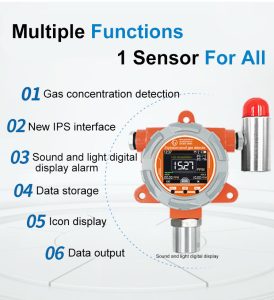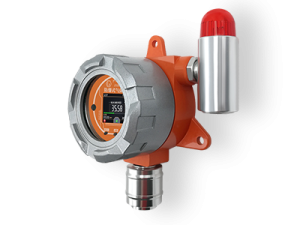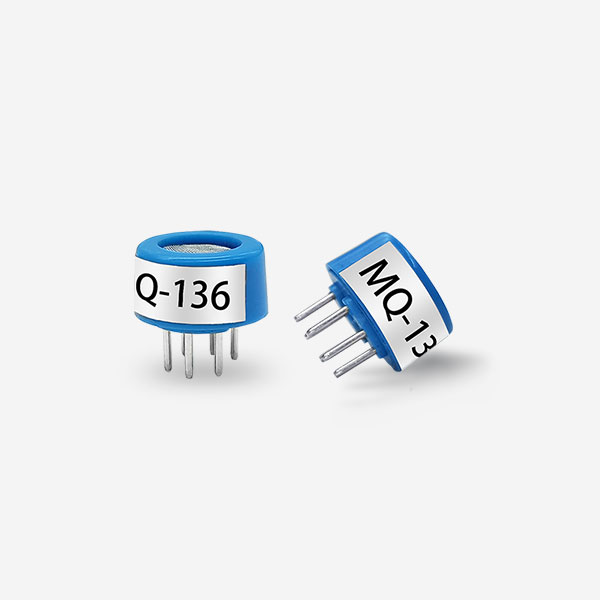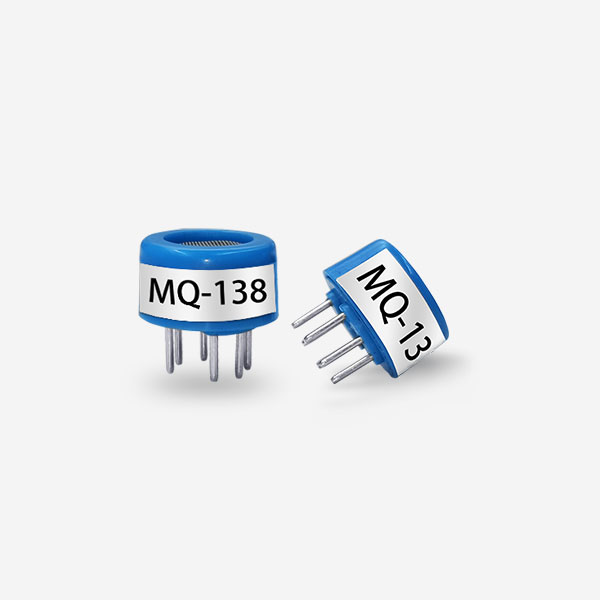-
Gas Detector Applications in Environmental Monitoring
- In the modern world, environmental monitoring has become a crucial aspect of preserving our planet's health and ensuring the well-being of its inhabitants. With the rise of industrialization, urbanization, and various other human activiti……
- Chat Online
-
Description
In the modern world, environmental monitoring has become a crucial aspect of preserving our planet's health and ensuring the well-being of its inhabitants. With the rise of industrialization, urbanization, and various other human activities, the atmosphere has become increasingly polluted, leading to numerous environmental issues such as air quality degradation, greenhouse gas emissions, and the presence of harmful contaminants. To tackle these challenges, gas detectors have emerged as indispensable tools in environmental monitoring. This article delves into the various applications of gas detectors in environmental monitoring, highlighting their importance, capabilities, and potential for further advancements.

1. Introduction to Gas Detectors
Gas detectors are devices designed to measure the presence, concentration, or composition of gases in an environment. They operate on a range of principles, including chemical reactions, optical absorption, and electrical conductivity, to detect specific gases or classes of gases. These devices are critical in environments where the presence of hazardous gases can pose a significant risk to human health, safety, and the environment.
In the context of environmental monitoring, gas detectors are used to monitor pollutants in ambient air, emissions from industrial processes, and the effectiveness of pollution control measures. They provide real-time data on gas concentrations, enabling decision-makers to take timely and effective actions to mitigate environmental risks.
2. Air Quality Monitoring
Air quality monitoring is one of the most significant applications of gas detectors in environmental monitoring. As urbanization accelerates and industrial activities expand, the concentration of pollutants in ambient air increases, posing serious health risks to the population. Gas detectors are essential in measuring the levels of various pollutants, including particulate matter (PM), nitrogen dioxide (NO2), sulfur dioxide (SO2), ozone (O3), and volatile organic compounds (VOCs).
2.1 Urban Air Quality Monitoring
In urban areas, gas detectors are used to monitor air quality in real-time, providing valuable data on pollution levels. This information is crucial for issuing air quality alerts, implementing traffic management measures, and promoting public awareness. For instance, when gas detectors detect high levels of particulate matter or ozone, authorities can issue warnings to the public, suggesting they limit outdoor activities to reduce health risks.
2.2 Industrial Emission Monitoring
Industrial activities are a major source of air pollution. Gas detectors are used to monitor emissions from factories, power plants, and other industrial facilities to ensure compliance with environmental regulations. By measuring the concentrations of pollutants in emissions, authorities can identify and penalize non-compliant industries, thereby encouraging them to adopt cleaner production methods.

3. Greenhouse Gas Monitoring
Greenhouse gases, such as carbon dioxide (CO2), methane (CH4), and nitrous oxide (N2O), are significant contributors to global warming and climate change. Monitoring their concentrations in the atmosphere is crucial for understanding the dynamics of climate change and developing effective mitigation strategies.
3.1 Atmospheric Monitoring
Gas detectors are used to measure the concentrations of greenhouse gases in the atmosphere, providing data on their global distribution and trends. This information is essential for climate modeling, policy formulation, and public awareness campaigns. For instance, by measuring CO2 concentrations at various locations around the world, scientists can map out the global distribution of CO2 emissions, identifying regions with high emissions and potential hotspots for climate change.
3.2 Emission Source Monitoring
Gas detectors are also used to monitor emissions of greenhouse gases from specific sources, such as landfills, waste incinerators, and agricultural activities. By measuring the emissions from these sources, authorities can assess their contribution to overall greenhouse gas emissions and take necessary measures to reduce them.
4. Monitoring Contaminants in Water and Soil
Gas detectors are not limited to atmospheric monitoring; they can also be used to detect contaminants in water and soil. This is particularly important in areas where industrial activities have led to significant soil and water contamination.
4.1 Water Contamination Monitoring
Gas detectors can be used to monitor contaminants in water bodies, such as volatile organic compounds (VOCs) and heavy metals. By measuring the concentrations of these contaminants, authorities can assess the risk they pose to human health and the environment and take necessary remediation measures.
4.2 Soil Contamination Monitoring
Soil contamination is another significant issue, particularly in areas with a history of industrial activities. Gas detectors can be used to detect contaminants in soil, such as hydrocarbons and heavy metals. This information is crucial for site remediation and ensuring that contaminated areas are properly managed to prevent further environmental degradation.
5. Advances in Gas Detector Technology
Gas detector technology has evolved significantly over the years, leading to improved accuracy, reliability, and versatility. New detection principles, such as laser-based spectroscopy and photoionization detection, have revolutionized the field, enabling the detection of a wider range of gases at lower concentrations.
5.1 Laser-Based Spectroscopy
Laser-based spectroscopy is a cutting-edge technology that uses laser light to measure the absorption of specific wavelengths by gases. This technique provides high sensitivity and selectivity, enabling the detection of trace gases at concentrations as low as parts per million or even parts per billion.
5.2 Photoionization Detection
Photoionization detection is another advanced technique that uses ultraviolet light to ionize gas molecules, generating a current that can be measured to determine gas concentration. This method is particularly useful for detecting volatile organic compounds (VOCs) and other easily ionizable gases.
5.3 Integration with IoT and Big Data
The integration of gas detectors with the Internet of Things (IoT) and big data analytics has also led to significant advancements in environmental monitoring. By connecting gas detectors to IoT networks, data can be collected, analyzed, and shared in real-time, enabling faster and more effective decision-making. Additionally, big data analytics can be used to identify trends, predict future pollution levels, and optimize monitoring strategies.
6. Challenges and Future Directions
Despite the significant advancements in gas detector technology, several challenges remain in environmental monitoring. These include the need for more accurate and reliable detectors, the cost of monitoring equipment, and the need for better data integration and analysis.
6.1 Accuracy and Reliability
While gas detectors have become increasingly accurate and reliable, there is still a need for continuous improvement. Research and development efforts should focus on developing detectors with higher sensitivity, selectivity, and stability to ensure accurate and reliable data.
6.2 Cost
The cost of gas detectors and monitoring equipment can be a significant barrier to widespread adoption. Efforts should be made to reduce costs through economies of scale, technological innovations, and public-private partnerships.
6.3 Data Integration and Analysis
With the increasing amount of data collected from gas detectors, there is a need for better data integration and analysis tools. Developing robust data platforms and analytical algorithms can help turn raw data into actionable insights, enabling more effective environmental monitoring and management.
Conclusion
Gas detectors have emerged as indispensable tools in environmental monitoring, playing a crucial role in protecting human health, safety, and the environment. By measuring the concentrations of pollutants and contaminants in various environments, gas detectors provide valuable data that can be used to assess environmental risks, develop mitigation strategies, and promote sustainable development. As technology continues to evolve, gas detectors will become even more accurate, reliable, and versatile, enabling us to better monitor and manage our environment for future generations.
-
Recommend:
-
-
Gas Detector Applications in Environmental Monitoring
In the modern world, environmental monitoring has become a …
-
Gas Sensor Technology: A Comprehensive Review
Gas sensor technology has undergone significant advancement…
-
How does the gas detector detect gas?
However, not all gas detectors are the same, as different m…
-
What is the difference between gas detectors?
They play a crucial role in ensuring safety in industries s…
-
 : +86 155 8830 2704
: +86 155 8830 2704 : jxdziot@gmail.com
: jxdziot@gmail.com
